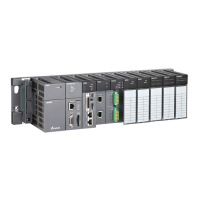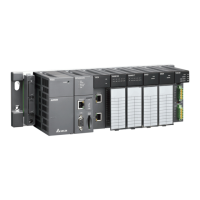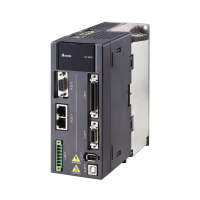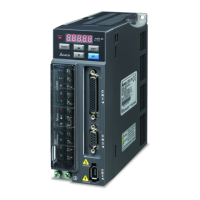Chapter 2 Devices
2-9
Step 4: Combine the sign bit, the exponent, and the mantissa to form the floating-point number.
0 10000011 01110000000000000000000
2
=41B80000
16
23 is represented by the double-precision floating-point number.
Step 1: Convert 23 into the binary number, i.e. 23.0=10111.
Step 2: Normalize the binary number, i.e. 10111=1.0111 ×2
4
(0111 is the mantissa, and 4 is the
exponent.).
Step 3: Get the value of the exponent.
∵E-B=4→E-1023=4 ∴E=1027=10000000011
2
Step 4: Combine the sign bit, the exponent, and the mantissa to form the floating-point number.
0 10000000011 0111000000000000000000000000000000000000000000000000
2
=403700000000000
16
Example 2:
-23 is represented by the single-precision floating-point number.
The steps of converting -23.0 into the floating-point number are the same as those of converting
23.0 into the floating-point number, except that the sign bit is 1.
1 10000011 01110000000000000000000
2
=C1B80000
16
-23 is represented by the double-precision floating-point number.
The steps of converting -23.0 into the floating-point number are the same as those of converting
23.0 into the floating-point number, except that the sign bit is 1.
1 10000000011 0111000000000000000000000000000000000000000000000000
2
=C03700000000000
16
2.2.2.3 Decimal Floating-point Numbers
Since single-precision floating-point numbers and double-precision floating-point numbers are
not widely accepted by people, they can be converted into decimal floating-point numbers for
people to make judgement. However, as to the operation of the decimal point, the PLC still
uses single-precision floating-point numbers and double-precision floating-point numbers.
A 32-bibt decimal floating-point number is represented by two consecutive registers. The
constant is stored in the register whose number is smaller while the exponent is stored in the
register whose number is bigger. Take (D1, D0) for example.
10
Decimal floating-point number=[Constant ]*
D0
[Exponent ]
D1
Base number D0=±1,000~±9,999
Exponent D1=-41~+35
The base number 100 does not exist in D0 because 100 is represented by 1,000×10
-1
. In
addition, 32-bit decimal floating-point numbers range from ±1175×10
-41
to ±402×10
+35
.
2.2.3 Strings
What strings can process are ASCII codes (*1). A complete string begins with a start character, and
ends with an ending character (NULL code). If what users enter is a string, they can enter 31
characters at most, and the ending character 16#00 will be added automatically in ISPSoft.
1. No string (NULL code) is moved.
D0=0 (NULL)

